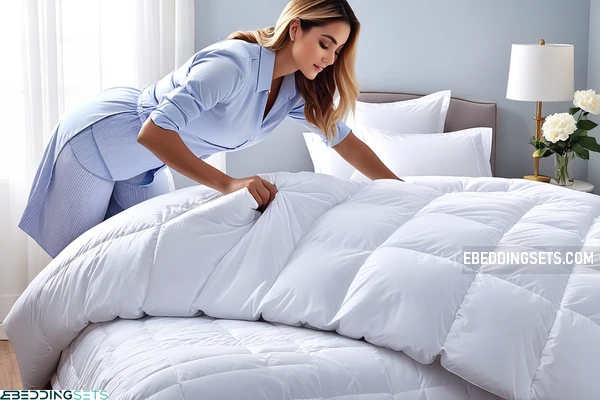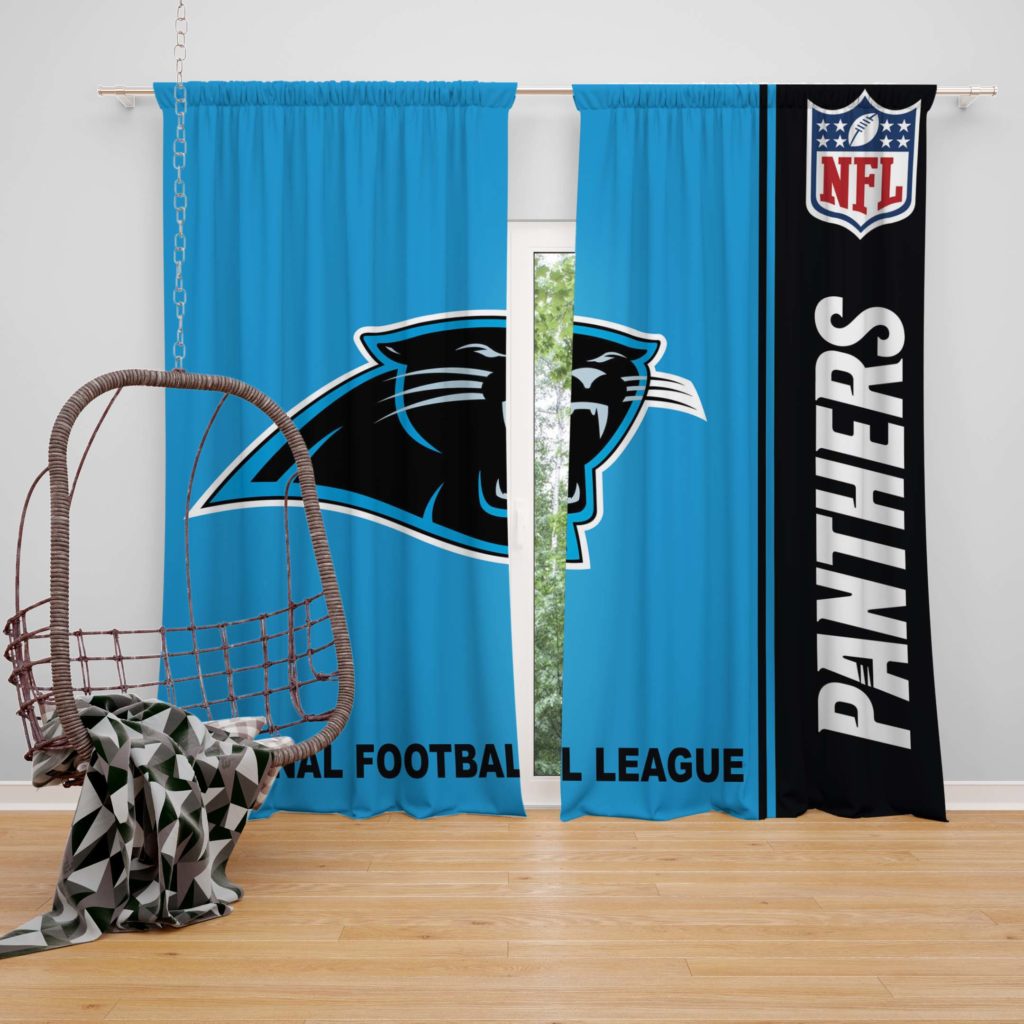Buying Guides, Product Spotlights
What is a Duvet Insert? Duvet Insert vs. Comforter
The Ultimate Guide to Duvet Inserts: What They Are, How They Work, and Why You Need One
Getting a good night’s sleep is so important. One key part of that is having the right bedding.
This guide is all about What is a duvet inserts? – what they are, why they’re great, and how to pick the best one for you.
But first, what exactly is a duvet insert? It’s the soft, fluffy layer inside your bedding that keeps you warm and cozy. It’s stuffed with materials like down feathers, synthetic fibers, or natural fibers like cotton.
A duvet cover is the removable outer cover that goes over the duvet insert. Its job is to protect the insert from dirt, sweat, and wear-and-tear. Covers are also great for changing up the look of your bed without buying a whole new insert.
This guide will explain all the benefits of using a duvet insert and cover. You’ll learn about the different types and materials. We’ll show you what to look for when choosing an insert to match your climate and sleep preferences. You’ll also get tips on putting inserts into covers properly and taking good care of them.
Whether you’re an experienced homemaker or new to bedding, this guide has all the info you need. By the end, you’ll know exactly how to create the perfect cozy sleeping setup with duvet inserts and covers. A good night’s sleep is so important, so let’s get started!
Table of Contents
What is a Duvet Insert?
Definition of a Duvet Insert
A duvet insert, also known as a comforter insert or a duvet inner, is a soft, fluffy, and insulating layer typically encased within a removable duvet cover. It is designed to provide warmth and comfort. At the same time, you sleep and act as the primary insulating component of your bedding setup. Duvet inserts are available in various materials, including down, synthetic, and natural fibers like cotton or wool.

Duvet Insert vs. Comforter: Understanding the Difference
While “duvet insert” and “comforter” are often used interchangeably, there is a distinct difference between the two. A comforter is a single piece of bedding that combines the outer fabric shell and the insulating fill material into one unit. On the other hand, a duvet insert is designed to be used with a removable duvet cover, which encases the insert and can be easily removed for cleaning or style updates.
The essential advantage of using a duvet insert lies in its versatility and ease of maintenance. By separating the outer cover from the insulating inner layer, you can effortlessly swap out the duvet cover to refresh the look of your bedding or clean it without washing the entire duvet insert.
The Benefits of Using a Duvet Insert
Versatility and Easy Maintenance
One of the most significant advantages of using a duvet insert is its versatility and ease of maintenance. By separating the outer cover from the insulating inner layer, you can effortlessly swap out the duvet cover to refresh the look of your bedding or clean it without washing the entire duvet insert. This saves time and effort and extends the lifespan of your duvet insert, as it doesn’t undergo frequent washing and drying cycles.
Temperature Regulation
Duvet inserts are designed to provide optimal temperature regulation, ensuring you stay comfortable throughout the night. They trap your body heat while allowing excess warmth to escape, preventing you from overheating or feeling too cold. This temperature regulation feature is particularly beneficial for individuals who tend to sleep hot or cold and those living in regions with varying seasonal temperatures.
Hypoallergenic Properties
Many duvet inserts are made from hypoallergenic materials, making them an excellent choice for individuals with allergies or sensitivities. Down and synthetic fiber inserts naturally resist dust mites, mold, and other common household allergens, providing a healthier sleeping environment. Additionally, duvet inserts with removable covers can be easily washed to eliminate accumulated allergens, enhancing their hypoallergenic benefits.
Types of Duvet Inserts
Down Duvet Inserts
Down duvet inserts are filled with ducks or geese’s soft, insulating, undercoating feathers. Known for their exceptional warmth-to-weight ratio and lofty texture, down inserts are highly sought for their luxurious feel and superior insulation properties.

Pros and Cons of Down Inserts
- Pros: Lightweight, breathable, long-lasting, and exceptionally warm for their weight.
- Cons: The cons are that they are more expensive than synthetic options, unsuitable for those with Down allergies, and may require frequent fluffing and maintenance.
Synthetic Duvet Inserts
Synthetic duvet inserts are filled with man-made fibers, such as polyester or microfiber, designed to mimic the warmth and loftiness of down. These inserts offer an affordable and hypoallergenic alternative to down, making them a popular choice for those with allergies or on a budget.
Advantages of Synthetic Inserts
- Hypoallergenic and resistant to dust mites and mold
- Easy to care for and machine-washable
- Retain their shape and loft over time
- More affordable than down inserts
Natural Fiber Duvet Inserts
Natural fiber duvet inserts are an excellent choice for those seeking eco-friendly and sustainable options. These inserts are typically filled with cotton, wool, or bamboo, providing a warm and breathable sleeping experience while minimizing environmental impact.

Exploring Eco-Friendly Options
- Cotton: Soft, breathable, and hypoallergenic
- Wool: Naturally insulating, moisture-wicking, and renewable
- Bamboo: Highly sustainable, temperature-regulating, and soft to the touch
By understanding the different types of duvet inserts available, you can make an informed decision that aligns with your personal preferences, budget, and lifestyle.
Choosing the Right Duvet Insert
Factors to Consider
When it comes to selecting the perfect duvet insert, several factors must be considered to ensure a comfortable and satisfying sleeping experience.
Fill Power and Warmth Level
The fill power of a duvet insert measures its insulating ability and loft. Higher fill power ratings indicate a more lofty and insulating insert, while lower ratings provide less warmth. A higher-fill power duvet insert is recommended for colder climates or those who prefer a cozier sleeping environment.
Size and Fit
Choosing the right size duvet insert is crucial for achieving a proper fit and preventing bunching or shifting at night. Measure your bed’s dimensions carefully and consult sizing charts provided by manufacturers to ensure a snug and comfortable fit.
Materials and Construction
The materials used in a duvet insert can significantly impact its performance, durability, and overall comfort. When selecting the appropriate materials for your needs, consider factors such as breathability, hypoallergenic properties, and maintenance requirements.
Matching the Insert to Your Climate and Sleeping Preferences
Tailoring your duvet insert choice to your local climate and personal sleeping preferences is essential for optimal comfort. For example, those living in warmer regions or sleeping hot may prefer a lightweight, breathable insert. At the same time, colder climates or those who desire extra warmth may benefit from a heavier, more insulating option.
Matching Inserts with Duvet Covers
It’s important to consider the compatibility between your duvet insert and duvet cover to achieve a cohesive and visually appealing bedding setup.
Tips for Ensuring Compatibility and Achieving the Desired Look:
- Measure the insert and cover dimensions to ensure a proper fit, allowing for some shrinkage after washing.
- Consider the fabric weight and drape of the duvet cover to complement the loft and warmth of the insert.
- Coordinate the insert and cover colors and patterns to create a harmonious aesthetic.
- Opt for duvet covers with ties or closures to keep the insert securely in place.
Duvet Insert Corner Tabs: What Are They and How Do They Work?
Explaining Corner Tabs
Many duvet inserts feature corner tabs or loops, small fabric tabs or loops sewn into each insert corner. These tabs serve a specific purpose: helping to secure the insert within the duvet cover and prevent shifting or bunching during use.
Benefits of Duvet Inserts with Corner Tabs
Duvet inserts with corner tabs offer several advantages:
- Secure Fit: The tabs can be tied or clipped to corresponding loops or ties within the duvet cover, ensuring a snug and secure fit that prevents the insert from moving inside the cover.
- Even Distribution: By anchoring the insert at each corner, the fill material is evenly distributed, maintaining a consistent loft and preventing cold spots or lumpy areas.
- Ease of Use: Corner tabs make inserting and removing the duvet insert from the cover easier, streamlining the process of making the bed or laundering the cover.
How to Properly Use Corner Tabs

To maximize the benefits of corner tabs, follow these simple steps:
By understanding the factors to consider when choosing a duvet insert and the benefits of corner tabs, you can create a comfortable and visually appealing bedding setup that meets your needs and enhances your overall sleep experience.
Locate the corresponding loops or ties within the duvet cover’s corners.
Find the loops or ties sewn into each corner of the duvet cover’s interior.
Pull the duvet insert’s corner tabs through the loops or ties in the cover.
Gently pull each of the duvet insert’s corner tabs through the corresponding loop or tie in the duvet cover.
Secure the tabs by tying knots or using the provided clips or fasteners.
Once the tabs are pulled through, tie them into a knot or secure them using the clips or fasteners provided with the duvet cover.
Repeat the process for all four corners, ensuring a snug and even fit.
Repeat steps 2 and 3 for all four corners of the duvet insert and cover, ensuring a tight, even fit with no shifting or bunching.

Care and Maintenance Tips for Duvet Inserts
Proper care and maintenance are essential to ensure your duvet insert retains its shape, loft, and insulating properties for years. Follow these tips to keep your duvet insert in top condition:
Washing and Drying Instructions
Most duvet inserts are machine-washable, but following the manufacturer’s instructions is essential. Consult the care label for specific guidelines on water temperature, detergent recommendations, and cycle settings. Avoid harsh detergents or bleach, which can damage the fill material and outer fabric.

For down and natural fiber inserts, it’s recommended to use a gentle, mild detergent and a delicate or gentle cycle. Synthetic inserts can typically withstand a warm or cool water wash on a regular cycle.
When drying, tumble dry on low heat or air-dry your duvet insert to prevent clumping or matting of the fill material. Some inserts may require occasional fluffing or gentle shaking during drying to maintain their loft.
Storing Duvet Inserts
Proper storage is critical to preserving the shape and condition of your duvet insert during the off-season or when not in use. Follow these tips for optimal storage:
- Clean the insert thoroughly before storing to prevent odors or mildew buildup.
- Store the insert in a breathable cotton or mesh bag to allow air circulation and prevent compression.
- Avoid storing the insert in plastic bags or airtight containers, as this can lead to moisture buildup and potential mold growth.
- Keep the insert in a cool, dry place, away from direct sunlight or extreme temperatures.
Extending the Life of Your Duvet Insert
With proper care, a high-quality duvet insert can last for many years. To maximize its lifespan, consider the following tips:
- Fluff and rotate the insert regularly to maintain its loft and prevent flat spots.
- Use a duvet cover to protect the insert from direct contact with body oils, sweat, and everyday dirt.
- Spot-clean spills or stains as soon as possible to prevent them from setting in.
- Follow the manufacturer’s recommendations for cleaning and drying to prevent damage to the fill material or outer fabric.
- Avoid excessive compression or folding, which can cause permanent creases or clumping of the fill material.
By following these simple care and maintenance tips, you can enjoy the comfort and warmth of your duvet insert for years to come.
Popular Duvet Covers on Sale
-
 The Expendables Movie Gunnar Jensen Dolph Lundgren Duvet Cover
The Expendables Movie Gunnar Jensen Dolph Lundgren Duvet Cover -
 Bob Marleys One Love Musical Journey Duver Cover
Bob Marleys One Love Musical Journey Duver Cover -
 NFL Indianapolis Colts Bedding Duvet Cover
NFL Indianapolis Colts Bedding Duvet Cover -
 NFL Denver Broncos Bedding Duvet Cover
NFL Denver Broncos Bedding Duvet Cover -
 Professor Severus Snape Movie Harry Potter Duvet Cover
Professor Severus Snape Movie Harry Potter Duvet Cover -
 Harry Potter and the Chamber of Secrets Movie Duvet Cover
Harry Potter and the Chamber of Secrets Movie Duvet Cover -
 Godzilla vs Kong Movie Duvet Cover
Godzilla vs Kong Movie Duvet Cover -
 Dobby the House Elf Harry Potter and the Deathly Hallows Movie Duvet Cover
Dobby the House Elf Harry Potter and the Deathly Hallows Movie Duvet Cover
Frequently Asked Questions (FAQs)
Can a duvet insert be used without a duvet cover?
While it is possible to use a duvet insert without a cover, it is generally not recommended. Duvet covers protect the insert from dirt, body oils, and wear, making it easier to clean and extending its life. Additionally, duvet covers allow you to change the look of your bedding without replacing the entire insert.
How often should I replace my duvet insert?
The lifespan of a duvet insert can vary depending on the quality of the materials, the level of care, and how frequently it is used. As a general guideline, down and natural fiber inserts may need to be replaced every 5-10 years, while synthetic inserts can last up to 10-15 years with proper care.
Are duvet inserts suitable for people with allergies?
Yes, many duvet inserts are designed to be hypoallergenic, making them a suitable option for people with allergies. Synthetic fiber inserts naturally resist dust mites, mold, and other common household allergens. Some down and natural fiber inserts are also treated with anti-allergen processes to minimize potential reactions.
What is the difference between a duvet insert and a comforter?
A duvet insert is designed to be used with a removable duvet cover. At the same time, a comforter is a single piece of bedding that combines the outer fabric shell and the insulating fill material into one unit. Duvet inserts offer more versatility and easier maintenance, as the cover can be removed and washed separately from the insert.
Can I use a duvet insert with a regular flat sheet?
While it is possible to use a duvet insert with a regular flat sheet, there are better setup options than this one. Duvet inserts are designed to be used with a duvet cover, which helps to keep the insert in place and prevents it from shifting or bunching up during the night. A flat sheet may not provide enough coverage or secure the insert properly, leading to discomfort and disrupted sleep.
Conclusion
A duvet insert plays a vital role in creating a cozy and comfortable sleeping environment. This guide has covered everything you need to know about duvet inserts – what they are, their benefits, different types, how to choose the right one, and tips for care and maintenance.
From luxurious down to affordable synthetic options, there’s a duvet insert to suit every preference and budget. Key factors like fill power, size, and materials should be considered along with matching to your climate and sleep preferences. Properly pairing inserts with covers and using corner tabs ensures an even, secure fit.
Investing in a high-quality duvet insert is an investment in your overall comfort and well-being. Take the time to explore the various options and find the perfect match. With the right duvet insert, you’ll be embracing cozy, restful slumbers for years to come.

















Jiffriya Ijaz
Author
Jiffriya Ijaz is a skilled and experienced writer specializing in the home decor niche. With years of expertise in this field, Jiffriya's writing is captivating, well-researched, and tailored to cater to the interests of home decor enthusiasts.
Latest posts
Buying Guides Fan Zone Home Decor Trends
Top 10 Ways to Show Your NBA Team Pride at Home
Our Story: From Fandom to Fabrics Picture this: I’m [...]
Mar
Buying Guides Fan Zone Home Decor Trends Styling Tips
How to Create an NFL-Themed Bedroom: A Step-by-Step Guide
Create the ultimate NFL-themed bedroom! Follow this step-by-step guide [...]
Mar
Fan Zone Home Decor Trends Product Spotlights
Weekend Wins: Save Big on NBA Bedding Essentials
Calling all basketball fans! Get ready to slam dunk [...]
Jul
Buying Guides
Discover the Best Duvet Covers for Style and Comfort
Elevating Your Bedroom with Duvet Covers When it comes [...]
May
Buying Guides Fan Zone
NFL Draft Fan Cave: Your Game Day HQ
Draft Day Dream Team: Building the Ultimate Fan Cave [...]
May
Fan Zone
NBA Conference Finals Heat Up
Gear Up for Game Day with EBeddingSets The NBA [...]
May
Buying Guides Home Decor Trends Product Spotlights Styling Tips
5 Ways to Anime-ify Your Home Decor
Calling all anime fans! Are you ready to level [...]
May
Buying Guides Home Decor Trends Uncategorized
The Psychology of Curtain Colors: How to Choose the Right Shade
When it comes to home decor, the color of [...]
May